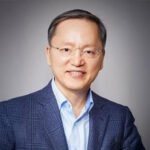SK Hynix Wuxi (Courtesy of SK Hynix)
SK Hynix Inc. will sell a nearly half stake in its foundry unit in China to a Chinese state-run enterprise for $349.3 million in a bid to expand its presence in the Chinese chip foundry market with great growth potential.
According to regulatory filings and semiconductor industry sources on Wednesday, SK Hynix System IC Co. last week signed an agreement to sell a 21.3% stake in its foundry unit in Wuxi, Jiangsu to China’s state-owned Wuxi Industry Development Group Company (WIDG) for $149.3 million by October.
The Chinese company will acquire an additional 28.6% stake later through a new share issuance for $200 million.
SK Hynix System IC, founded in 2017, is the South Korean memory chip giant’s wholly-owned contract chipmaking subsidiary, and it currently controls a 100% stake in the foundry fab in Wuxi.
After the stake sale, SK Hynix System IC will hold 50.1% of the foundry fab, and WIDG will control 49.9%.
Chip fabrication process (Courtesy of SK Hynix)
The foundry stake sale to China’s state-run company is expected to help SK Hynix expand its foothold in China’s contract chipmaking market, poised to enjoy a boom in upcoming years, according to chip industry experts.
CHINA IS A PROMISING FOUNDRY MARKET
WIDG is a Chinese state-owned company, controlling 63 entities, including 33 wholly-owned and holding enterprises and public institutions, as well as 30 shareholding enterprises, according to its website.
SK Hynix foundry fab in Wuxi churns out foundational chips, which are 28 nanometers or larger, on 8-inch wafers.
These chips, also called mature or legacy chips, are widely used in automotive power management systems, display driver integrated circuits (DDIs), missiles and Internet of Things devices.
The foundry industry is now in a fierce advanced process race for higher profit and market leadership among top players such as Taiwan Semiconductor Manufacturing Company Ltd. (TSMC) and Samsung Electronics Co.
But mature chips still account for about 70% of the entire semiconductor market in terms of sale volume due to their broad applications.
(Graphics by Sunny Park)
China has recently emerged as a major legacy chip market thanks to surging demand from the country’s electronics companies and electric carmakers.
According to global industry research firm IBS, the global market for 28-nm and above mature chips is forecast to more than triple to $28.1 billion in 2030 from 2020 on the explosive growth in demand from China.
CHANCE TO WIN MORE MARKET SHARE
SK Hynix, a latecomer in the foundry industry, hopes to ride China’s legacy chip boom with its close ties with the Chinese state firm so it can expand its presence in the Chinese contract chipmaking market.
Combined with the massive market presence of WIDG’s subsidiaries and invested companies in the world’s second-largest economy, SK Hynix’s memory and foundry capabilities are expected to create great synergy, industry observers said.
SK Hynix Wuxi plant employees (Courtesy of SK Hynix)
With its partnership with WIDG through stake sharing, the Korean chipmaker hopes to tap local foundry orders mainly taken by the world’s No. 5 and 6 contract chip makers SMIC and Huahong Group in China.
The Korean chipmaker’s foundry fab in Wuxi is also free from US restrictions aiming to limit China’s access to advanced AI chips made with US inputs.
The US government currently bans exports of US-originated advanced chip technologies and equipment – mainly dynamic random-access memory chips made with 18-nm or below processes, 128-layer or above NAND flash memories and 14-nm or below logic chips.
But some industry experts warn that SK Hynix’s foundry unit in Wuxi could take a direct hit if the US tightens its restriction on the global chip supply chain.
The US Department of Commerce in December announced that it would look into the mature chip supply chain to gather information, suggesting that it might have already taken a step to restrict China’s legacy chipmaking industry.
By Ik-Hwan Kim and Jeong-Soo Hwang
lovepen@hankyung.com
Sookyung Seo edited this article.















